Nature Portfolio: Throughout The Year
Nature Notebooking for Ages 6 – 12
Charlotte Mason – Classical – Inquiry-based
Nature notebooking using the Nature Portfolio will lead your student through the four seasons, and into five different biomes to discover the various life forms which inhabit them. Biomes include Yards and Gardens, Woods and Fields, Ponds and Streams, Desert Lands, and Along the Seashore.
Hard Copy
$39.95
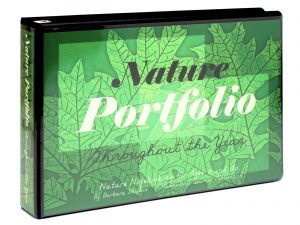
PRODUCT DESCRIPTION:
The Nature Portfolio is designed as an inquiry-based introductory living science course, and is compatible with both the Charlotte Mason and Classical approaches.
Through the process of observation, comparing and contrasting, researching, writing, and illustrating, your young naturalist will build a journal documenting their journey through the seasons and into the wonders of God’s creation.
The Notebooking Pages:
The first section in the Nature Portfolio contains student notebooking pages, printed on heavy weight paper. This section is divided into four chapters according to the seasons. Each chapter is further divided into five double page spreads each focusing on a different type of biome. And, within each of these double page spreads, several life forms are introduced. Notebooking pages include many black line drawings, diagrams, and puzzles. *Additional illustrations are included in the cut-and-paste resource section. See images.
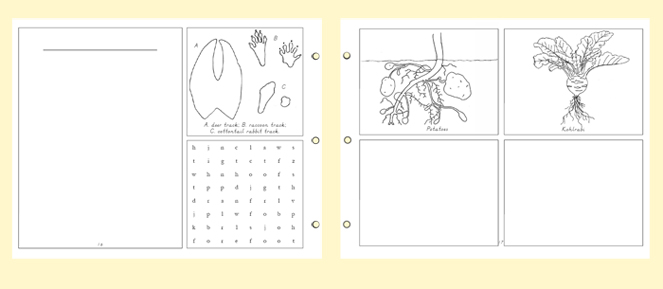
The Parent Guide:
This section contains both the teacher’s guide and the cut-and-paste resource materials. These pages will be removed from the binder as pages are completed. Included are cut-and-paste images and suggested multi-level writing assignments, such as narration, copy work, and vocabulary words, for each notebooking page. For your convenience, the back of the Portfolio holds reproducible classification forms and lined pages, plus a detailed reading schedule presented in an easy to read table.
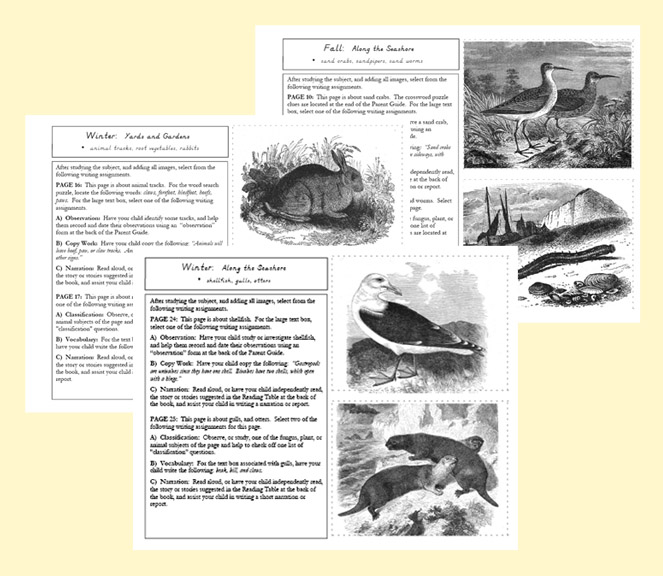
METHOD AND PHILOSOPHY OF APPROACH:
Nature Study and the Inquiry-based Approach:
Throughout the course of study, your student will need to get out into the field as often as possible to observe the life forms in their natural settings, and when this isn’t possible, to research using your local library and natural history museums. Expect your young naturalist to be engaged in exploration, observation, comparing and contrasting, answering questions, and researching.
Nature Study and Notebooking:
Throughout the course of study, your student will be encouraged to describe various life forms both in writing and through illustrating. The pages of the Nature Portfolio are also a perfect place to add general science, math, and art concepts, as they relate to the topic. For example, when studying apples, also explore symmetry in nature, and the star shaped pattern revealed when slicing the apple crosswise. Or, when studying jellyfish, also discuss the difference between opaque, translucent, and transparent, or explore other translucent or transparent creatures such as the glass frog or the glasswing butterfly.
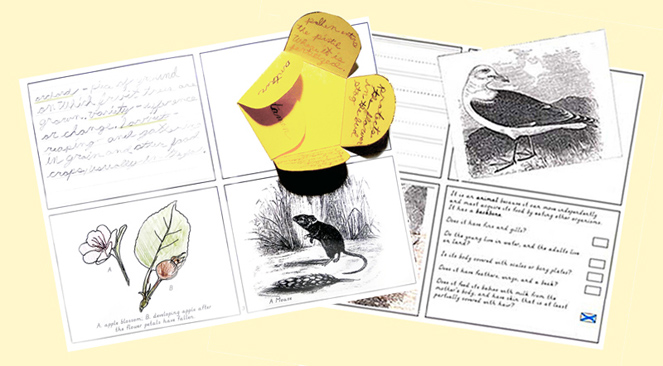
Above examples show: 1) a page from the fall chapter focusing on Yards and Gardens, and with the suggested life forms being mice, and apples; 2) a page from the winter chapter focusing on Along the Seashore, and with the suggested life forms being gulls and otters.
Typical Pattern of Study:
1. Referring to the Nature Portfolio’s Table of Contents and Parent Guide Materials for the detailed spine and cut-and-paste notebooking materials.2. Observing and researching the life forms indicated, collecting specimens, comparing with other known life forms, and discussing. 3. Reading aloud and locating age appropriate sources for independent student reading.4. Describing the life form at what ever level is appropriate for each student. For students on the older edge of the spectrum, this may involve note-taking, outlining, and writing in paragraph form. For students on the younger end of the spectrum, this may involve illustrating, giving oral narrations, and completing copywork. 5. Showing the life form either through sketching, photographing and printing images, collecting images from online, or using images and diagrams cut from the Teacher’s Guide. 6. Assembling the notebooking pages of the Portfolio.
Be a naturalist. Share the love!
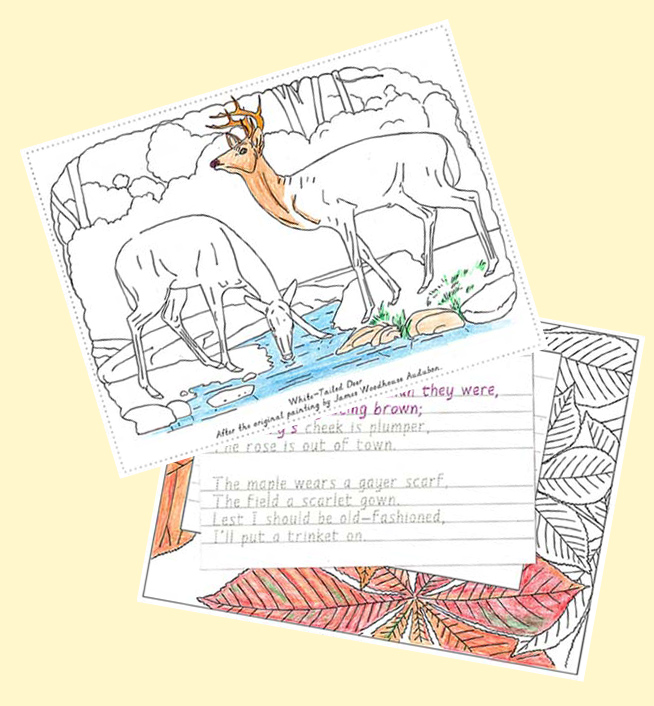
Above examples show one of the sets of coloring book and poetry copy work pages found at the end of each chapter. This set is from the fall chapter.

